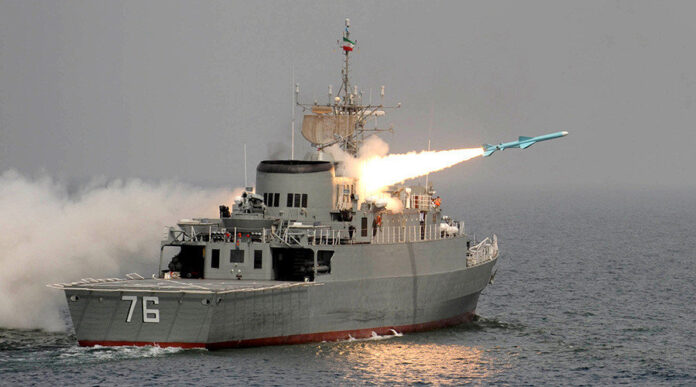The information in this article is based on US Defense Intelligence Agency's Iran Military Power Report.
Iran operates two independent naval forces—the Islamic Republic of Iran Navy (IRIN), the Artesh’s naval branch, and the IRGC Navy (IRGCN). Iran established the IRGCN in 1985; the IRIN existed as part of the Artesh before the 1979 revolution. The commander of the IRIN is Rear Admiral Hossein Khanzadi, and the commander of the IRGCN is Rear Admiral Alireza Tangsiri.
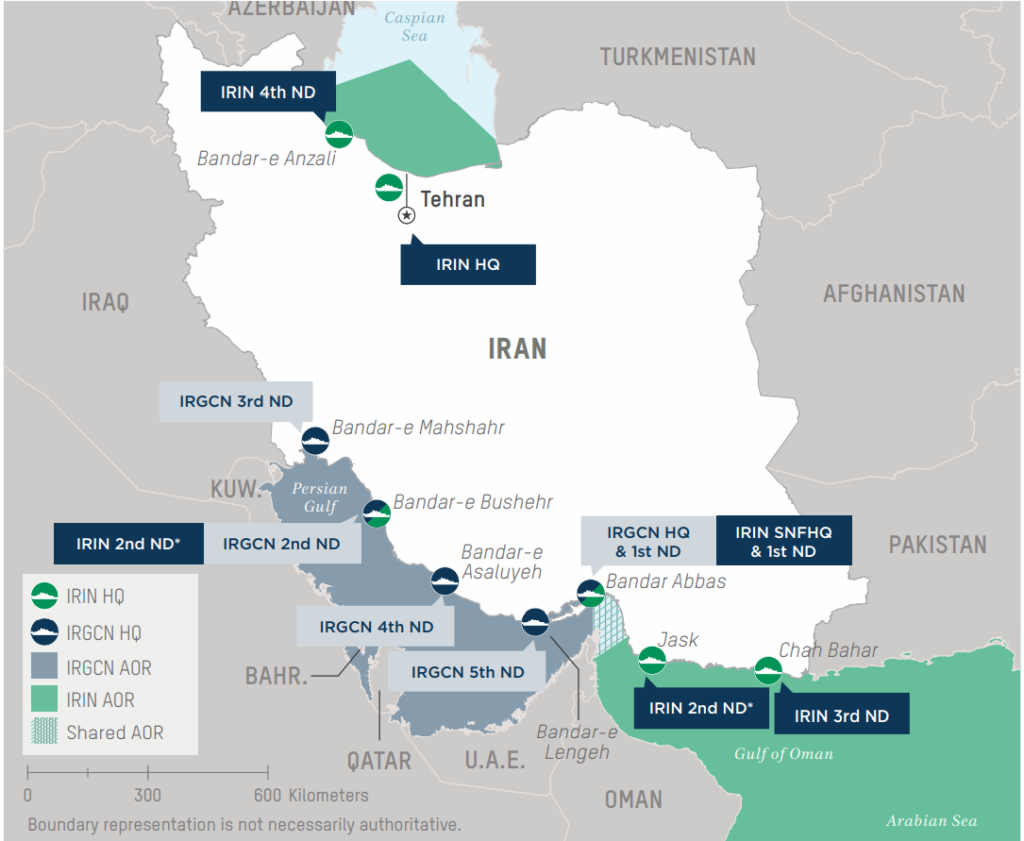
In 2007, the two naval forces reorganized, and Iran assigned specific areas of operation for each.Tehran assigned the IRGCN sole responsibility for the Persian Gulf and assigned the IRIN the Gulf of Oman and Caspian Sea. Both services continued to share responsibility for the Strait of Hormuz. The geographic split helped stream line command and control (C2) while reducing confusion, miscommunication, and duplication of efforts. With the added responsibility, the IRGCN established two new naval districts (NDs) in the central and southern Persian Gulf. The reorganization also provided the IRIN with a greater mandate to operate farther from the
Iranian coast.
Islamic Republic of Iran Navy (IRIN)
The IRIN comprises approximately 18,000 personnel and is considered Iran’s “blue water navy” with its larger and more traditional surface ships compared with the IRGCN. Iran is the only Persian Gulf nation with a submarine force, which the IRIN operates. The service’s primary mission is to defend Iranian territorial waters and protect the country’s economic interests in the Caspian Sea, Gulf of Oman, and beyond. It consists of primarily older, small surface combatants along with mostly small submarines and some logistic support vessels. As part of Iran’s layered maritime defenses, the IRIN provides antisurface warfare capabilities focused on the Gulf of Oman with coastal defense cruise missiles (CDCMs), naval mines, surface combatants, and submarines. The IRIN is Iran’s first line of defense in the Gulf of Oman and the Arabian Sea. The IRIN also aims to secure Iranian economic interests by safeguarding the flow of commerce in the region from piracy and interdiction.
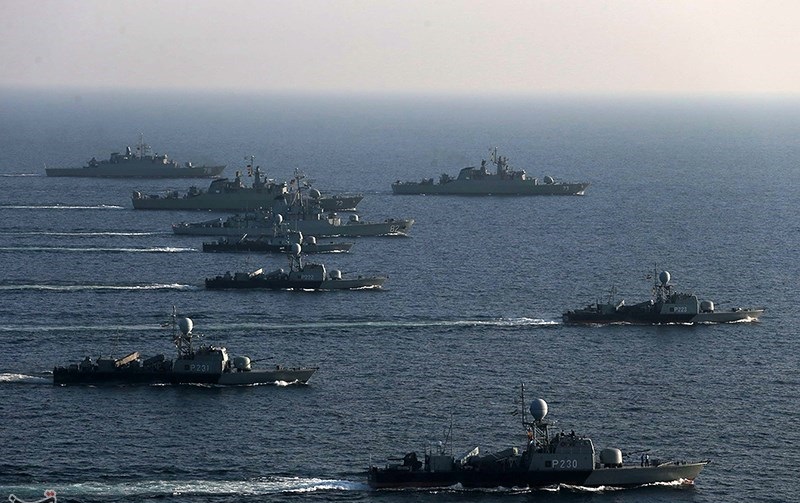
The IRIN is geographically divided into four NDs, with the central IRIN headquarters in Tehran.
• 1st ND: Headquartered at Bandar Abbas (Strait of Hormuz); also the location of the IRIN’s Southern Forward Naval Head quarters (SFNHQ), which coordinates across all southern IRIN NDs
• 2nd ND: Headquartered at Bushehr (Persian Gulf) and Jask (Gulf of Oman); 2nd ND HQ moving to Jask following 2007 reorganization
- 3rd ND: Headquartered at Chah Bahar (Gulf of Oman)
• 4th ND: Headquartered at Bandar Anzali (Caspian Sea)
IRIN Order of Battle
| Class | Type | Inventory |
| Kilo | Attack Submarine | 3 |
| Fateh | Coastal Submarine | 1 |
| Yono (Ghadir) | Midget submarine | 14 |
| Nahang | Midget submarine | 1 |
| Jamaran (Moudge) | Corvette | 2 |
| Vosper Mk 5 | Corvette | 3 |
| PF 103 (Bayandor) | Corvette | 2 |
| Combattante II (Kaman) | Fast Attack Craft, Missile | 13 |
| Hendijan | Patrol craft, missile | 3 |
| PGM-71 (Parvin) | Patrol craft, missile | 3 |
| Cape (Kayvan) | Patrol craft, missile | 3 |
| U.S. Mk II | Patrol craft, coastal | 6 |
| U.S. Mk III | Patrol craft, coastal | 10 |
| C-14 | Patrol craft, coastal | 9 |
| FB 40 | Patrol craft, inshore | 6 |
| Hengham | Landing Ship, tank | 3 |
| Karbala | Landing Ship, logistic | 6 |
| Wellington Mk4 | Howercraft | 2 |
| Wellington Mk5 | Howercraft | 4 |
| Kharg | Replenishment Ship | 1 |
| Bandar Abbas | Fleet Supply Ship | 2 |
| Delvar | Support Ship | 6 |
| Hemdijan | Tender | 7 |
| Shahsavar | Training Ship | 1 |
| Makran | Forward Base Ship | 1 |
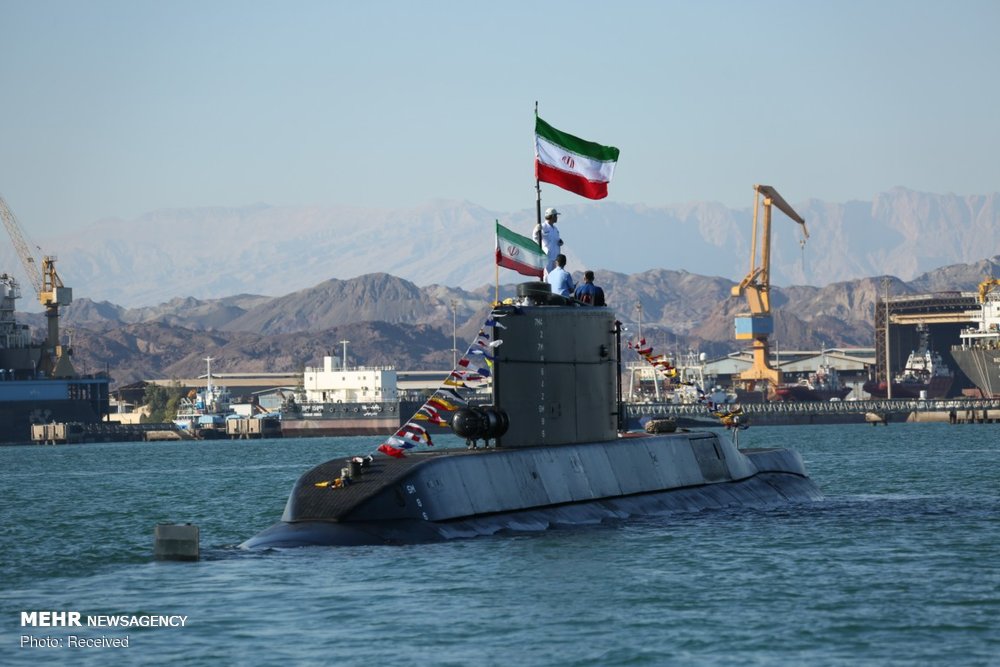
One of the IRIN’s key missions is to conduct out-of-area operations and naval diplomacy in the region and beyond. Since 2009, the IRIN has maintained near-continuous out-of-area naval deployments for counterpiracy operations in the Gulf of Aden, foreign port visits, and bilateral exercises with regional navies.
Despite its ageing platforms, the IRIN has been moderately effective in maintaining readiness and sustaining operations. If the IRIN is to fulfil its longer-term ambitions to function as a true blue-water navy, it will have to invest in more modern combatants and support ships. Iran has been able to domestically build corvettes and patrol boats for the IRIN and upgrade legacy platforms with new capabilities, including antiship cruise missiles (ASCMs). Despite its need for new auxiliaries, Iran has given no indication it is planning to invest in acquiring new support vessels. Iran acquired three Russian Kilo-class attack submarines in the 1990s and began domestically producing North Korean Yono class midget submarines in the mid-2000s. Iran continues to invest in domestically developing and producing more-capable subsurface platforms, including larger coastal submarines.
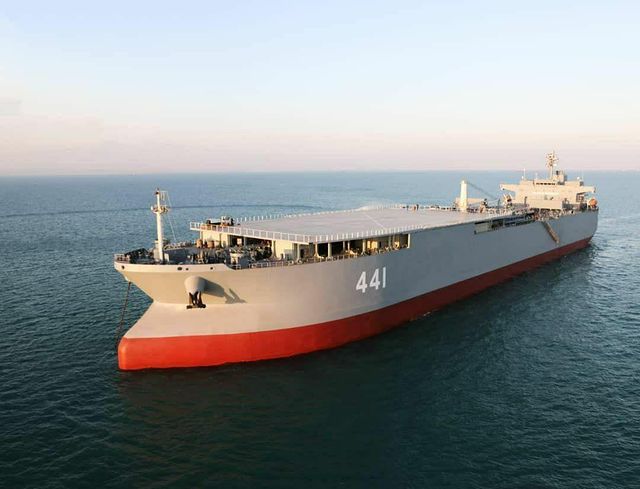
The IRIN typically conducts a major national-level exercise each year called VELAYAT. The event usually entails a series of naval manoeuvres involving IRIN surface combatants, submarines, and CDCM forces.
Islamic Revolutionary Guard Corps Navy
The IRGCN, which comprises approximately 20,000 personnel, is tasked with protecting primarily the Iranian littoral. It employs an asymmetric doctrine that emphasizes speed, mobility, large numbers, surprise, and survivability and takes advantage of Iran’s geography with the shallow and confined waterways of the Persian Gulf and Strait of Hormuz. Although the IRGCN has significantly upgraded its fleet in terms of size and lethality since the end of the Iran-Iraq War, it remains a force composed of smaller platforms. Rather than acquire larger ships as a more traditional navy might, the IRGCN has pursued smaller, faster vessels armed with a variety of weapon systems. Iran views acquiring these types of vessels in sufficient numbers will allow it to threaten foreign navies and overcome wartime attrition.
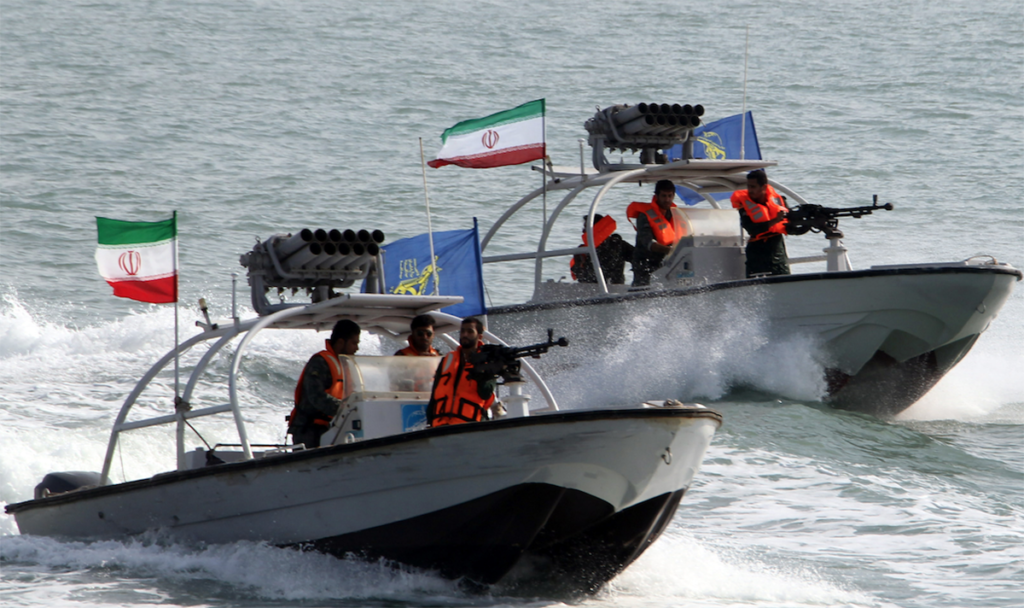
The IRGCN aims to overwhelm an adversary’s defenses by using multiple platforms and weapons together to achieve tactical surprise. These systems include small boats armed with guns, rockets, torpedoes, and missiles; CDCMs; naval mines; and maritime special operations forces. IRGCN units train to use hit-and-run attacks against larger enemy naval vessels using swarms of small boats. The IRGCN could also restrict access or even attempt to fully close the Strait of Hormuz. Iran has modified a range of small boats to be able to deliver naval mines rapidly. In support of these goals, IRGCN acquisition efforts have focused on fielding a large fleet of faster and more-capable small boats; developing more-advanced ASCMs to be launched from sea, ground, or air; and building a large inventory of more-sophisticated naval mines.
The IRGCN is geographically divided into five NDs, with the central IRGCN headquarters at Bandar Abbas.
• 1st ND: Headquartered at Bandar Abbas (Shahid Bahonar); responsible for the Strait of Hormuz
• 2nd ND: Headquartered at Bushehr; responsible for the north-central Persian Gulf
• 3rd ND: Headquartered at Bandar Mahshahr; responsible for the northern Persian Gulf
• 4th ND: Headquartered at Asaluyeh; responsible for the central Persian Gulf
• 5th ND: Headquartered at Bandar Lengeh; responsible for the southern Persian Gulf, including the disputed islands of Lesser
Tunb, Greater Tunb, and Abu Musa
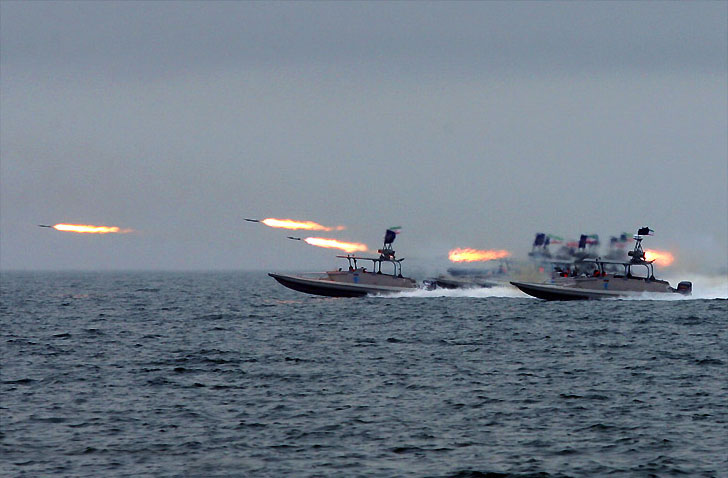
Many of Iran’s NOBLE PROPHET exercises—the IRGC’s typical large-scale annual exercise—are naval-focused with IRGCN elements leading the activities. IRGCN NOBLE PROPHETs are usually deterrent-themed events intended largely for strategic messaging, primarily aimed at the West and regional states.
Major Naval Capabilities
Fast Attack Craft and Fast Inshore Attack Craft
The IRGCN is the primary operator of Iran’s hundreds of fast attack craft (FAC) and fast inshore attack craft (FIAC). These platforms have been the mainstay of the IRGCN since its inception in the 1980s, although the Iranian FAC/FIAC inventory has grown significantly in terms of size and lethality since that time. Larger and more-capable, Iranian FAC are usually armed with ASCMs or torpedoes. The largest of these vessels are Iran’s 10 Chinese-built Houdong missile boats acquired in the mid-1990s, which serve as the capital ships of the IRGCN fleet; these vessels are frequently used in Persian Gulf and Strait of Hormuz patrols. Originally equipped with C802 missiles, Iran has since upgraded the Houdongs with extended-range Ghader ASCMs.
Iranian FIAC, which are smaller but far more numerous, are lightly armed and usually fitted with only machine guns or rockets. Used en masse, these vessels can harass merchant shipping and conduct swarm tactics during a force-on-force naval engagements.
IRGCN Order of Battle
| Class | Type | Inventory |
| Houdong (Thondor) | Fast Attack Craft, Missile | 10 |
| Peykaap I | Patrol craft, coastal, torpedo | 15 |
| Peykaap II | Patrol craft, coastal, missile | 25 |
| Peykaap III | Patrol craft, coastal, missile | 5 |
| Mk 13 | Patrol craft, coastal, missile | 10 |
| C-14 | Patrol craft, coastal, missile | 5 |
| Tir | Patrol craft | 10 |
| Tarlan | Patrol craft, inshore | 15 |
| Kashdom II | Patrol craft, inshore | 15 |
| Ashoora | Patrol craft, inshore | Unknown* |
| Cougar | Patrol craft, inshore | Unknown* |
| FB RIB-33 | Patrol craft, inshore | Unknown* |
| Gashti | Patrol craft, inshore | Unknown* |
| Kuch | Patrol craft, inshore | Unknown* |
| Bladerunner (Siraj) | Patrol craft, inshore | Unknown* |
| Boghammar | Patrol craft, inshore | 20 |
| Hormuz 21 | Landing Ship | 2 |
| Hormuz 24 | Landing Ship | 3 |
| Harth 55 | Support Ship | 1 |
| Safir Kish | Transport | 3 |
| Naser | Transport | 3 |
| Saviz | Intelligence | 1 |
*Note: The exact numbers for many Iranian small boat types are unknown, but the IRGCN has hundreds of
small boats throughout the Persian Gulf.
Surface Combatants
The IRIN operates Iran’s larger surface combatants, which include three 1960s-era British-built Vosper Mk 5 class corvettes and several French-built Combattante class patrol craft acquired before the Islamic Revolution. To expand the IRIN fleet, Iran has since
domestically built several of its own Combattante patrol craft and three new Jamaran class corvettes, which closely resemble Iran’s
Vospers with modifications, such as an added helicopter flight deck. Iran has commissioned three of the vessels, including one on the Caspian Sea, which was severely damaged in early 2018. The IRIN has also expanded its number of missile combatants by upgrading older auxiliaries and patrol ships with short- and medium-range ASCMs.
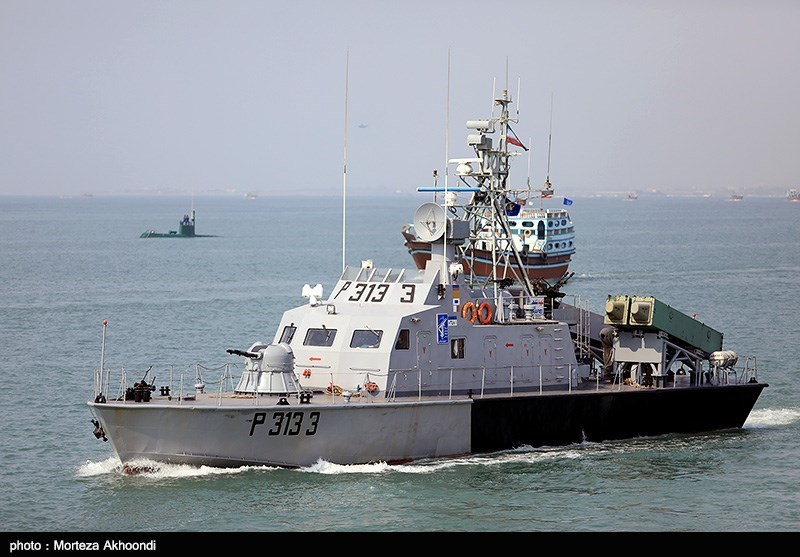
Submarines
Submarines are a critical component of the IRIN, which has undertaken an ambitious construction program to increase its subsurface production capabilities and expand its fleet. Iran has four classes of submarines in its order of battle. Iran’s largest and most capable subsurface platforms are the three Kilo-class attack submarines it purchased from Russia in the 1990s. The IRIN also has 14 North Korean-designed Yono class midget submarines, which it can arm with Iranian Valfajar heavy-weight torpedoes. In February 2019, Iran presented its first submarine-launched ASCM, the Jask-2, which can be launched from the Yono. Iran also has
a single domestically designed and produced Nahang midget submarine, which lacks torpedo tubes and may serve as a special operations platform. Also in February 2019, the IRIN officially commissioned its first coastal submarine, the Fateh. Iran claims the Fateh class, Iran’s largest domestically-built submarine, can launch both torpedoes and ASCMs.
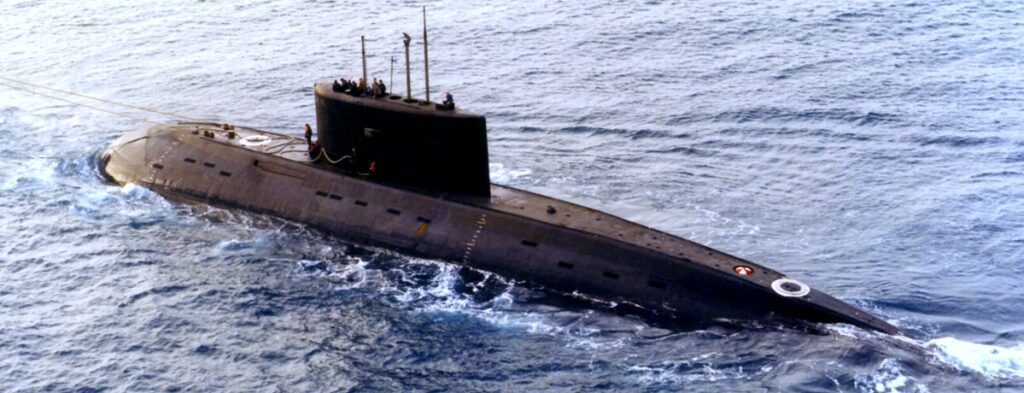
Naval Mines
Mine warfare has been an integral part of Iran’s naval strategy since the Tanker War. Iran has an estimated inventory of more than 5,000 naval mines, which include contact and influence mines. Both navies have devised strategies to rapidly deploy mines while improving force survivability. Iran has a variety of vessels that can lay mines, but the IRGCN has integrated its doctrine of using smaller, faster vessels into its mine-laying strategy. Iran has equipped many of its Ashoora small boats with mine rails capable
of holding at least one mine.
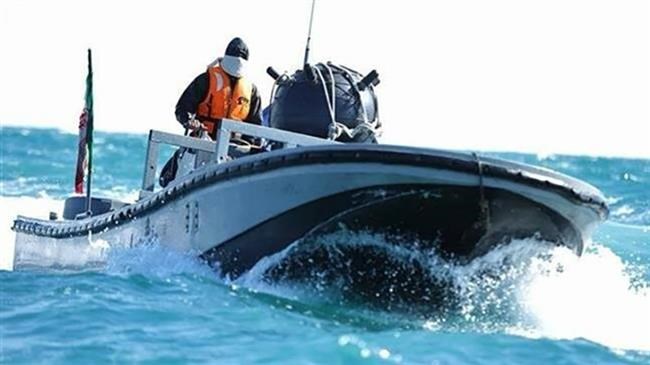
Coastal Defense Cruise Missiles
CDCMs have been one of Iran’s primary layers of defense for both navies to protect the country’s littoral and maritime approaches.
Iran initially gained experience with CDCMs using Chinese-built Silkworm missiles during the Tanker War. Both the IRGCN and IRIN operate CDCM forces, and Iran has invested greatly in developing and producing more-ca pable ASCMs, primarily based on Chinese C802 and C700-series missiles. Based on its domestic copy of the C802, called the Noor, Iran has developed the 200-kilometer-range Ghader and the 300-kilometer-range Ghadir ASCMs. Iran also domestically produces the 35-kilometer-range Chinese C704 ASCM as the Nasr.
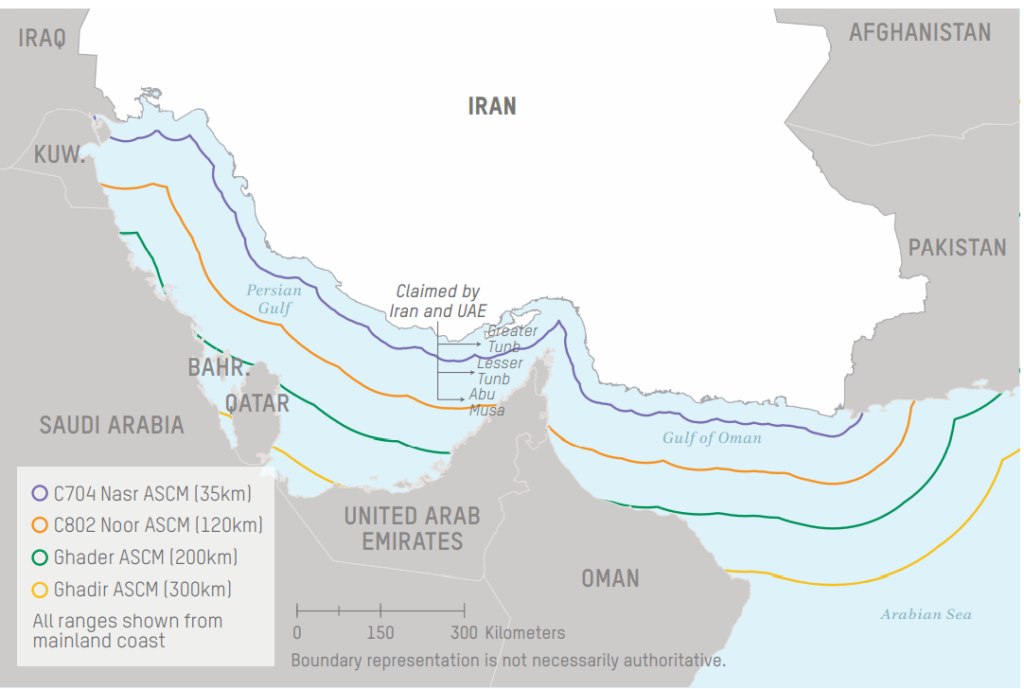
Antiship Ballistic Missiles
The IRGCASF has publicly announced and tested its ability to target ships with several ballistic missile models—including the
Khalij Fars, Hormuz 1, and Hormuz 2— based on the Fateh-110 SRBM. These antiship ballistic missiles (ASBMs) have rangesof up to 300 kilometers and are equipped with terminal seekers that steer the missile to its target. These systems use a variety of seekers, including electro-optical and antiradiation homing.
Related Article:
Iran Navy and IRGC Navy ship Recognition and Identification Guide
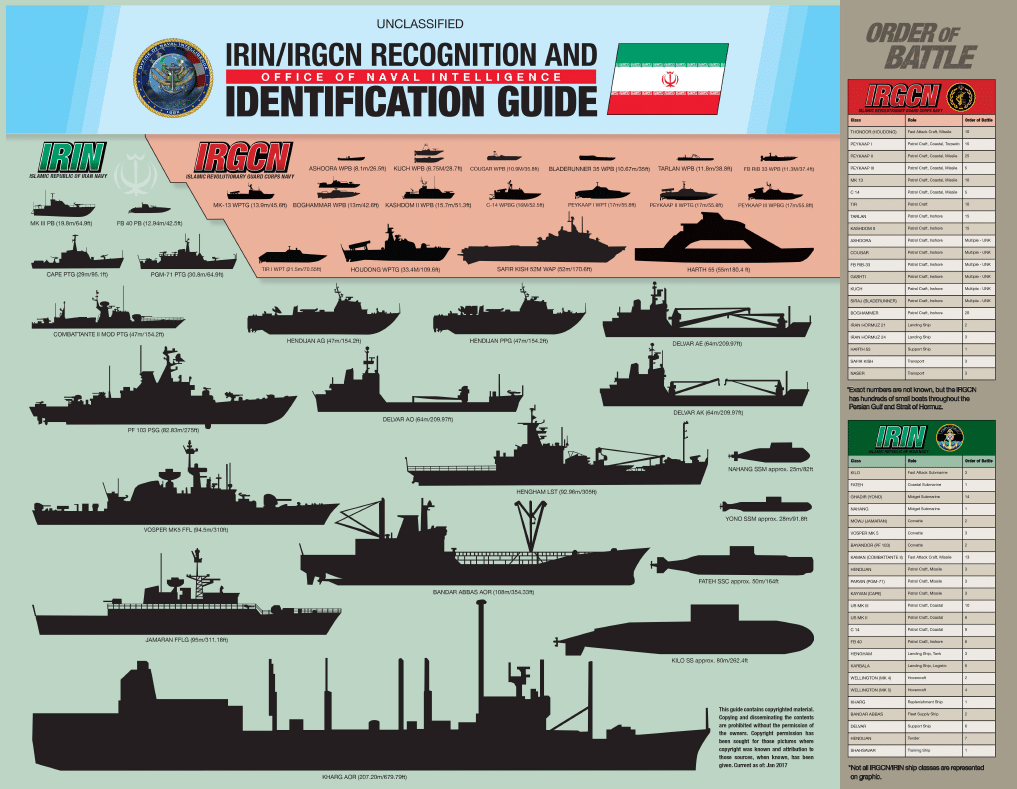
Check out Naval Library App to find out the specifications of the Iran Naval Assets.




